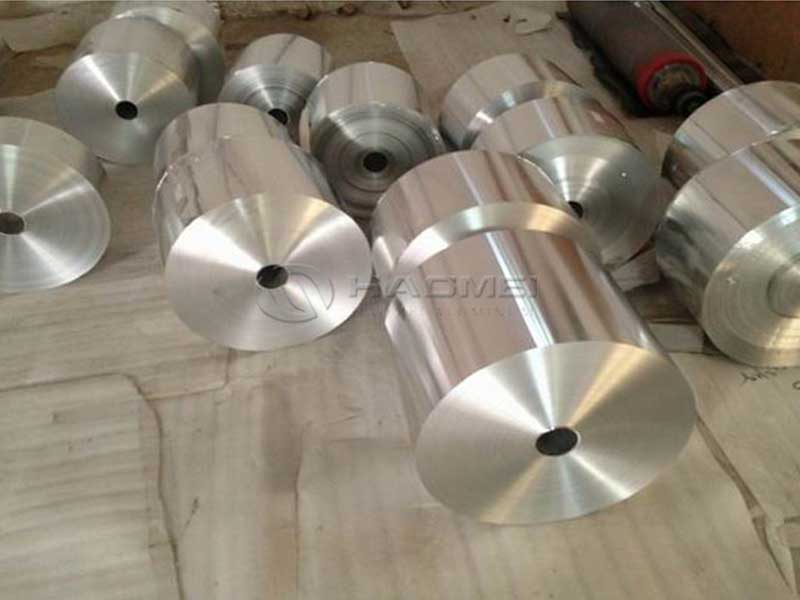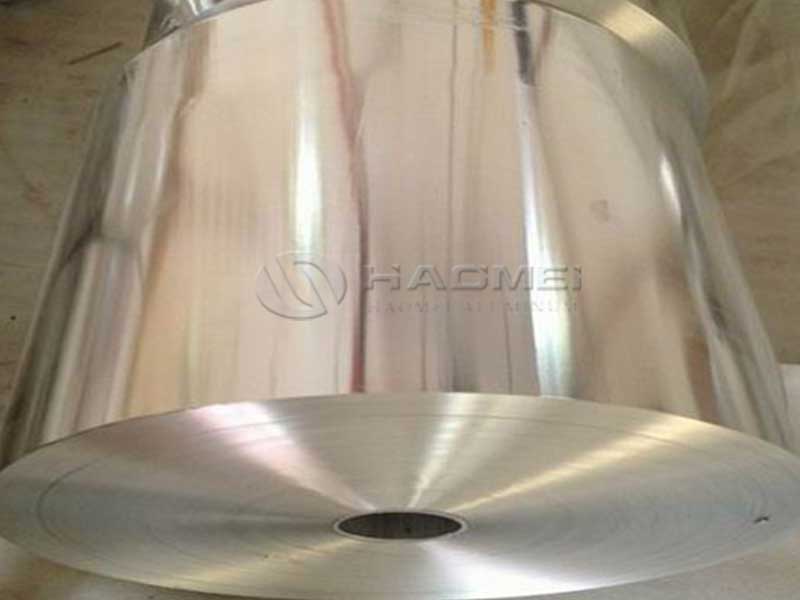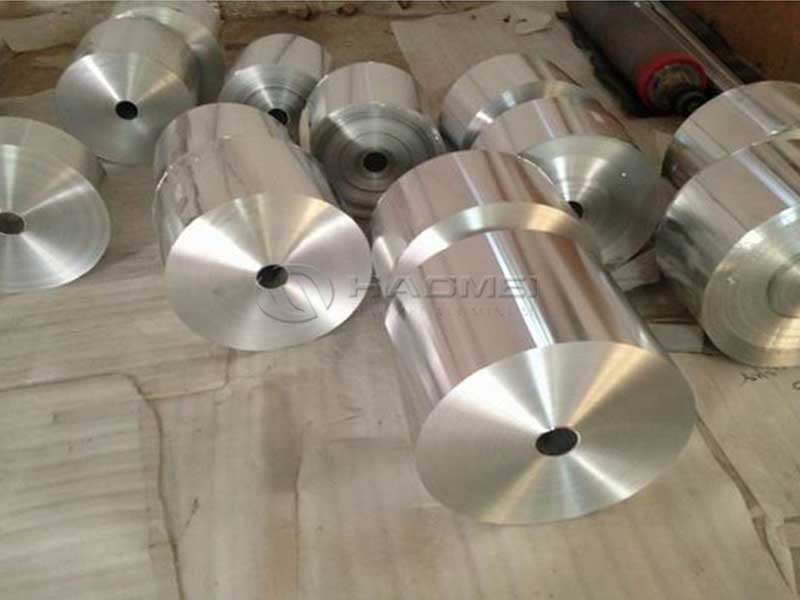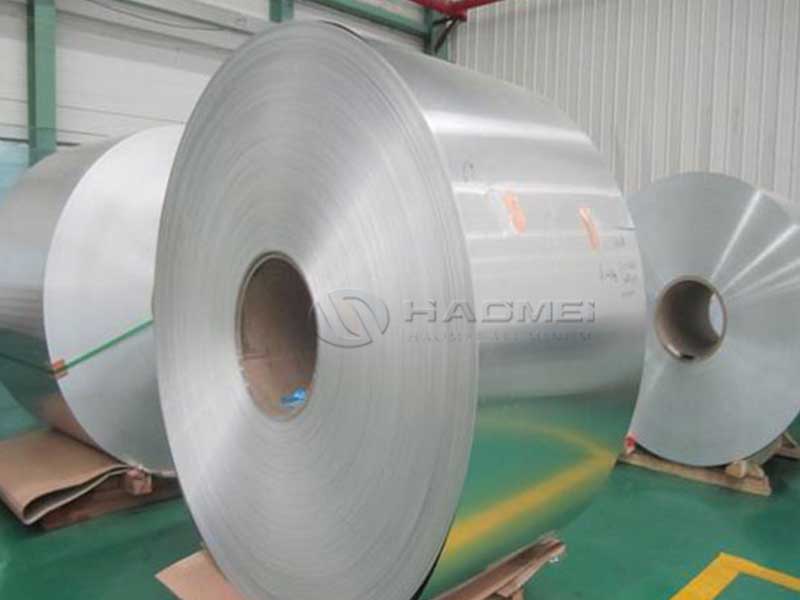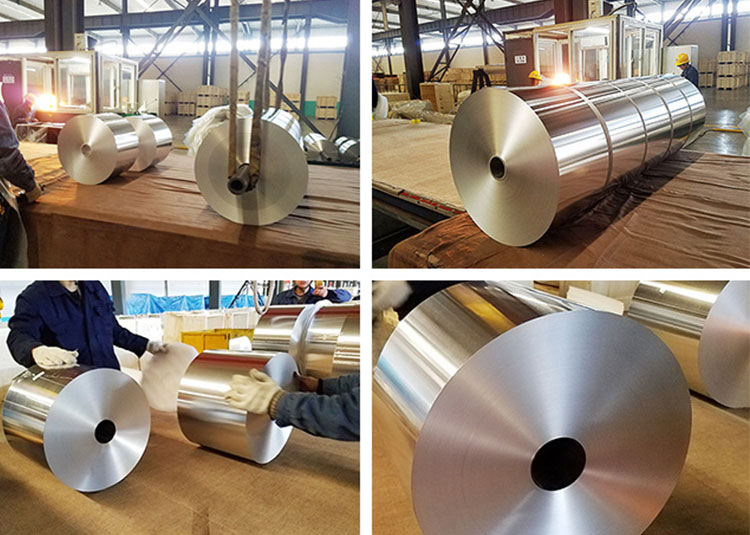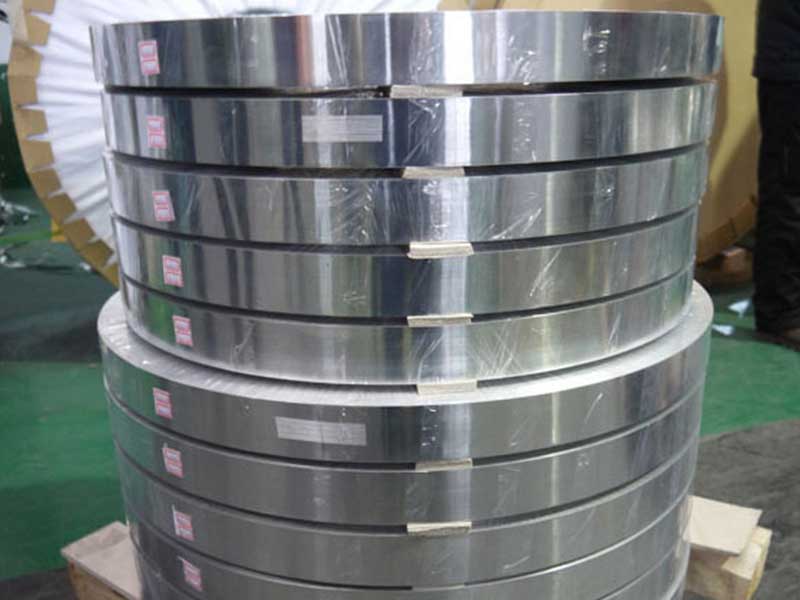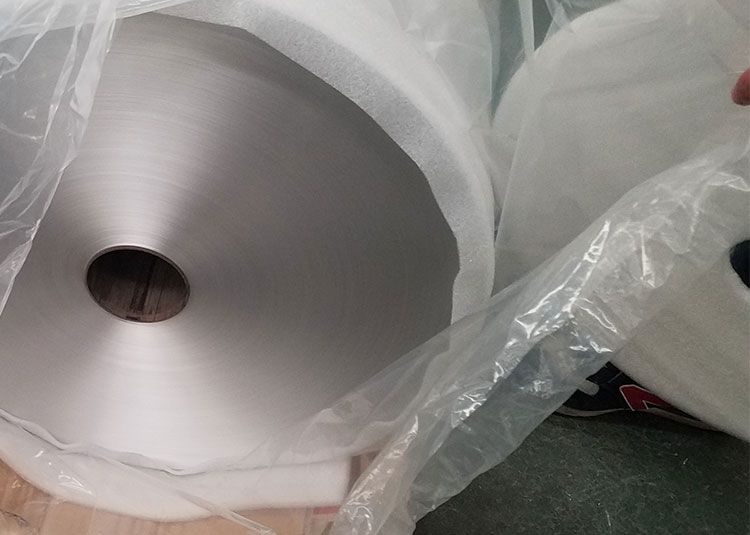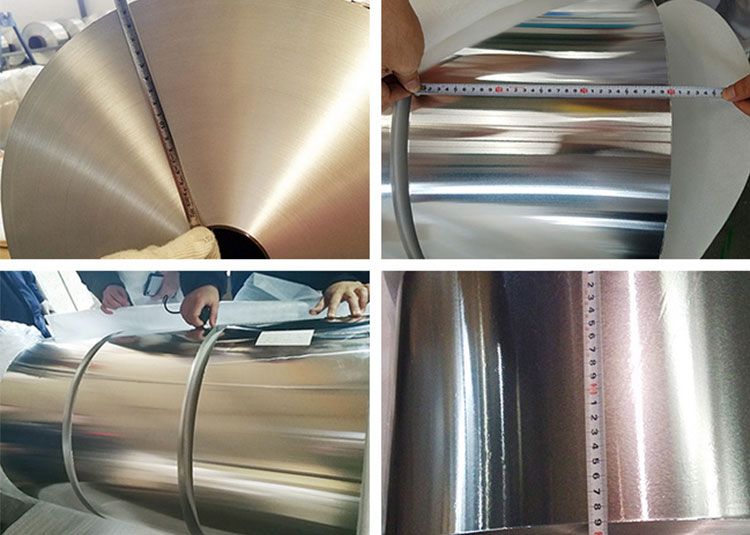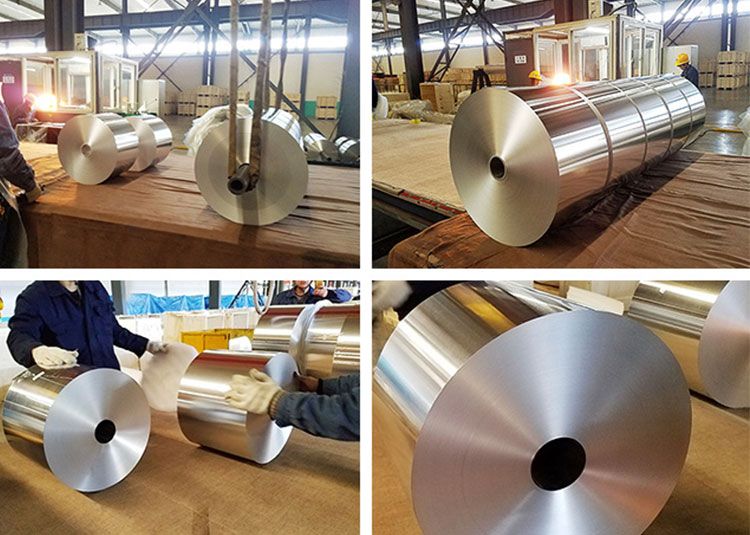Simple processing of aluminum foil
The aluminum foil blank is a cold-rolled aluminum coil with a thickness of 0.4-0.7mm and has a high multiple deformation rate. The aluminum foil blank is first pre-quenched at 240-480 ° C, and then sent to a roller press for high hardness and high finish. The steel rolls are rough-rolled, intermediate-rolled, finish-rolled, rolled into sheets, and finally quenched to form aluminum foils. The thickness of the aluminum foil can be controlled by adjusting the tension, the rolling force of rough rolling, and the speed of finishing rolling.
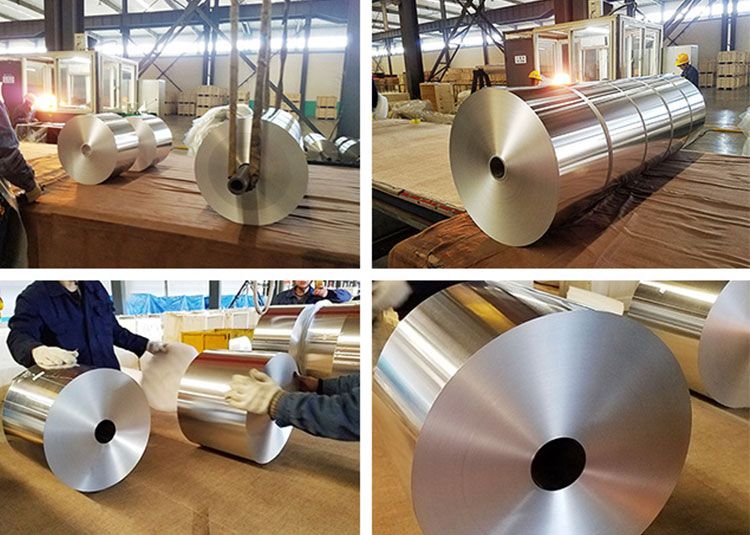
During finish rolling, the thickness of the foil decreases as the rolling speed increases; the greater the tension, the smaller the thickness. The minimum thickness produced by the belt production method can reach 0.0025mm, and the width can reach 1800mm. This kind of unprocessed aluminum foil is called light foil or plain foil. The light foil has poor bearing capacity and is rarely used alone. Generally, according to different uses, the light foil should be further processed to make more advanced packaging materials.
Deep processing of aluminum foil
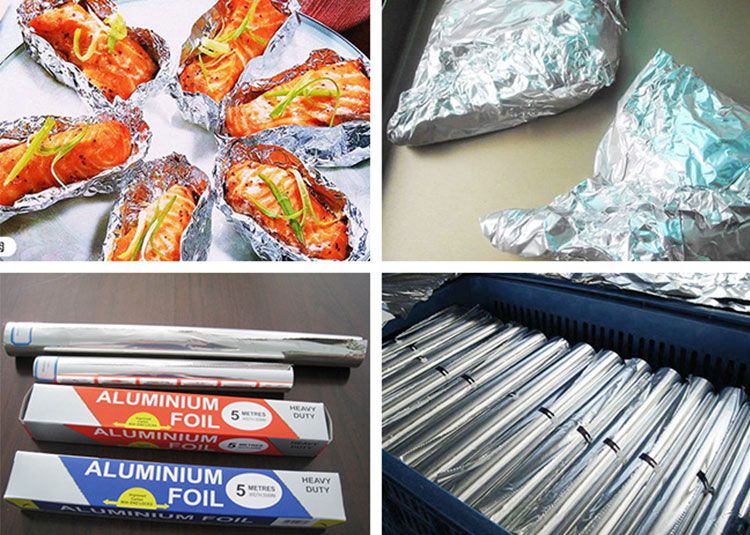
complex
The aluminum foil is laminated with plastic film, paper, cellophane, etc. with an adhesive or coated with PE, etc. to form a composite film for various purposes.
coloring
Aluminum foil can be painted in various colors on the coloring machine, and it is expected that its own metallic luster will cooperate to form a unique luster color and improve its decorative performance.
Aluminum foil can be directly printed or printed after surface coating, generally using flexographic printing, gravure printing and screen printing. Because aluminum foil is not absorbent and has poor surface adsorption capacity, it needs to be dried by the volatilization of the solvent in the coating during printing. In addition, the aluminum foil is very soft, so it is necessary to ensure that the softness of the printing ink is the same as that of the aluminum foil after drying. When printing, the thin aluminum foil should be supported by pallets or mounted with a liner before printing to prevent the aluminum foil from breaking. The printed aluminum foil is used as a sales packaging material, and its special luster is matched with the ink, which has a good decorative effect on commodities.
Embossing
Aluminum foil can be used to emboss various light and dark concave and convex patterns on the embossing machine, which is used for wrapping food and has a very decorative effect. Aluminum foil embossing can also improve its surface flatness and eliminate its slight wrinkles.


